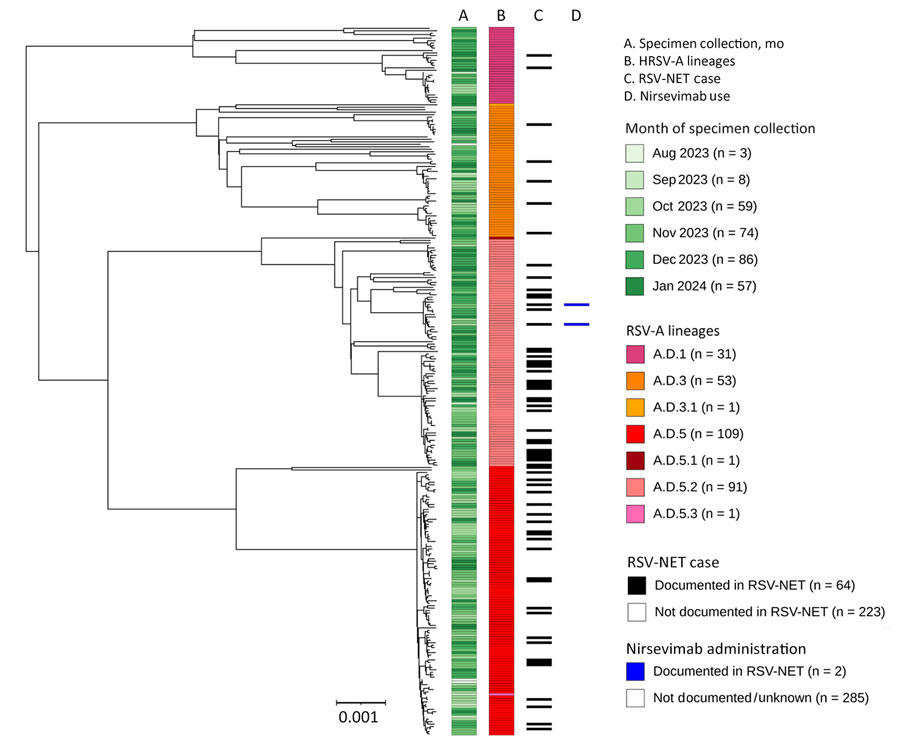Volume 30, Number 11—November 2024
Dispatch
Genomic Epidemiology of Human Respiratory Syncytial Virus, Minnesota, USA, July 2023–February 2024
Figure 1

Figure 1. Midpoint-rooted, time-scaled phylogenetic tree of RSV-A whole-genome sequences, Minnesota, USA, October 2023–January 2024. Tree was generated using Interactive Tree of Life (https://itol.embl.de) software. Column annotations denote (from left to right) month of specimen collection, whole-genome lineage classification, documentation of the infected case in the RSV-NET surveillance database for RSV-associated hospitalizations, and administration of nirsevimab before infection as documented in RSV-NET. Scale bar indicates estimated substitution rate calculated from inputs of time and phylogenetic distance. RSV, respiratory syncytial virus; RSV-NET, Respiratory Syncytial Virus Hospitalization Surveillance Network.
Page created: September 24, 2024
Page updated: October 22, 2024
Page reviewed: October 22, 2024
The conclusions, findings, and opinions expressed by authors contributing to this journal do not necessarily reflect the official position of the U.S. Department of Health and Human Services, the Public Health Service, the Centers for Disease Control and Prevention, or the authors' affiliated institutions. Use of trade names is for identification only and does not imply endorsement by any of the groups named above.